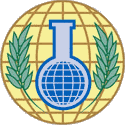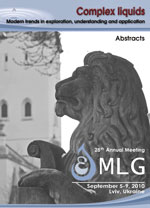Chemical Reactions of Biological proteins in solution by Time-resolved Diffusion Method
Masahide Terazima
Solution dynamics is quite important for revealing molecular mechanisms of chemical reactions of biological molecules. For that purpose, a variety of time-resolved spectroscopic methods have been developed. However, in spite of extensive efforts, detection of time-development of intermolecular interaction, which is essential for understanding the mechanism and function of biological molecules, has been almost impossible. In this respect, we have succeeded in detecting the temporal change in the intermolecular interaction by using a time-resolved detection of diffusion. We used the pulsed laser induced transient grating (TG) method for the measurements in time domain. We applied this technique to the photochemical reactions of various proteins. Here we will present recent studies on phototropin in particular for the reverse reaction of this protein, which will provide us information on protein folding reaction in solution.
Phototropins (phot1, phot2) are well known as the blue light receptors for phototropism, stomatal opening and chloroplast relocation. The photochemical reaction of a plant blue-light photoreceptor Arabidopsis phototropin 1 (phot1)-LOV2 domain with a linker region (phot1LOV2-linker) has attracted significant interest since the discovery of this protein. Phots consist of two photoreceptive domains LOV1 and LOV2 at their N terminus, Ser/Thr kinase domain at their C terminus, and a linker domain that connects the LOV2 domain and the kinase domain. Each of the two LOV domains noncovalently binds a single flavin mononucleotide as a chromophore. Upon photoillumination of the chromophore, we discovered that the main conformational change involves the unfolding of the alpha-helix present in the linker region and this change is closely linked to biological function. The unfolded state of this linker should undergo a return to the folded conformation via a dark reversion process, but when does this occur? The restoring dynamics of the linker domain induced by a reverse reaction of the phot1LOV2-linker construct was investigated by the time-resolved diffusion method using two-step excited transient grating method. Following the disruption of the covalent bond between the cysteinyl and flavin, the unfolded conformation was observed to fold with a time constant of 13 ms. The rate is considerably (~10000 times) slower than the helix formation rate measured for an alpha-helical polypeptide in solution. This slow rate suggests that an inter-domain interaction between the LOV domain and the linker is important and the LOV domain acts as a template to facilitate the folding of the linker into an alpha-helix conformation. We will discuss this reaction by considering the solution dynamics.



